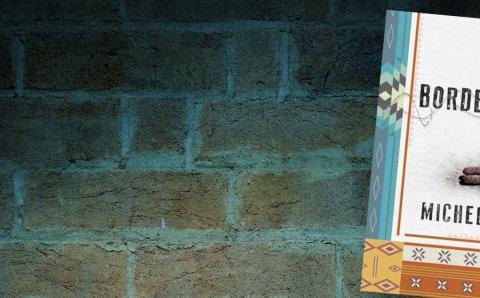“There is a time for everything, and a season for every activity under the heavens: a time to be born and a time to die . . . ” Ecclesiastes 3:1-2
You are going to die. We all are going to die.
Somewhere along the line, we in contemporary Western culture tend to forget that death is the expected, natural end to life—perhaps because the development of technological advances throughout the 20th century has encouraged the idea that we can, in fact, “beat” death.
That attitude sometimes motivates doctors, patients, and their families to make heroic attempts to extend a person’s life by days or weeks—without regard for the physical, emotional, spiritual, and financial costs, without considering the wishes or values of those being treated.
The prospect of loss and the profound grief that we will have to endure in the midst of death can be overwhelming. So we tend to overlook Paul’s note to the Philippians “ . . . to live is Christ and to die is gain” (Phil. 1:21). Our prayers focus instead on the desire for healing, for the inexplicable miracle. Even when death is certain, we earnestly pray for God to counteract the laws of nature and allow for more time on earth. Christ himself, faced with the knowledge of his certain death, prayed, “My Father, if it is possible, may this cup be taken from me” (Matt. 26:39).Of course, he followed that with, “Yet not as I will, but as you will.” It is often beyond our human understanding to pray—and believe—that a premature death is indeed part of God’s will.
Healing vs. Cure
We all want to experience healing in our life and in the lives of those we love. But healing is not synonymous with cure, nor is it simply the absence of disease. It is rather the sense of peace that comes when relationships have been reconciled, emotional wounds soothed, and spiritual struggles resolved. If we accept the reality that we (or our loved ones) are dying, we can experience the richness and fulfillment that come from honest, intimate sharing of life at its most vulnerable moments. It is for this purpose that the disciplines of palliative care and hospice exist. Engaging these resources can transform life for patients and families, yielding blessings that far outweigh burdens and joy that eclipses sorrow.
Over the past three decades, palliative medicine has evolved as a distinctive medical specialty with a unique set of knowledge, skills, and practice. The primary objective of palliative care is the relief of suffering and improvement of the quality of life for patients and families living with life-defining illness.
Palliative medicine addresses the certainty that the majority of us will be faced with a diagnosis for which cure is not possible. Whether a chronic progressive disease, certain cancers, or an acute event that cannot be reversed, most people and their families will have to address the reality that life is shorter than hoped. But they will have the time to anticipate and plan for a limited life expectancy.
The focus of palliative medicine is not on death and dying but rather on living completely and abundantly when afflicted with a serious medical challenge. Palliative care includes improving quality of life through aggressive management of symptoms; coordinating appropriate patient care; assisting with decision making; accessing community and health care resources to obtain optimal care; and working with the patient and family to negotiate the psychological, spiritual, and physical impacts of the disease.
Palliative practitioners strive to understand the values, wishes, and hopes of the patient and family. They communicate these with family and other practitioners in the medical care system and implement plans of care that are consistent with these aspirations.
A palliative plan of care can improve a person’s symptoms, ability to function, and his or her quality of life. Life-sustaining treatments may be pursued as long as they are consistent with patient preferences. But always with a clear understanding of the natural course of disease—aware of God’s capacity to perform miracles, we must also be mindful of the laws of nature God created.
For all of us a time will come when God’s hand will gently reach down to bring us home. Our natural tendency is to push God’s hand away rather than grasp it, hold on tight, and prepare for the ultimate healing.
Hospice and Palliative Care
The historical link between hospice and palliative care has given rise to some confusion about their distinction.
Hospice refers to the spectrum of medical care offered specifically at the end of life, generally defined as a prognosis of six months or less. Hospice agencies provide care through an integrated, interdisciplinary team. Workers include the home care nurse, social worker, chaplain, medical director, and volunteers. These all provide distinct services to patients—typically in their homes—and meet on a regular basis to discuss, refine, and implement a plan of care for each patient and family.
The hospice philosophy of care seeks to determine the unique interests and values of each patient and family and bring together the resources to enhance comfort and quality of life. The focus is on bringing a sense of meaning, beauty, and hope to the patient and family amid the reality of imminent death. Hospice workers are specialists in the art of compassionate caring and experts in symptom management. Their goal is to provide relief from suffering, manage symptoms, help reconcile relationships, and assist in the transition between this life and the next.
Many serious, chronic, or life-defining illnesses have the potential of imposing a burden of suffering on patients and their families. Patients in these circumstances deserve to have palliative services included as part of their plan of care. Hospice care enters the life of a patient and family when doctors foresee a prognosis of months or less. The integration of palliative services, on the other hand, can begin from the time of diagnosis.
We all must die. But we live with the hope of being embraced in the arms of our Lord and Savior when we take our final breath. At that moment, in the words of the psalmist, God’s people “will have no fear of bad news; their hearts are steadfast, trusting in the Lord” (Ps. 112:7). Our transformation to heaven is cloaked in sadness and grief because of loss and separation. But God’s grace assures our ultimate healing and reuniting with God and God’s people. As we face that crossroad where joy and sorrow meet, we can be assured that in the end, joy wins.
What You Can Do
- Have honest conversations with family and close friends about your or a loved one’s expectations, hopes, and fears.
- Where do you want to be when you die?
- Who do you want caring for you when you can’t care for yourself?
- Who do you want making decisions for you if you no longer can?
- What scares you about dying?
- What gives you comfort and joy?
- Appoint a power of attorney to make decisions for you when you no longer can. Complete an advanced directive to guide health care providers and family when faced with challenging decisions at the end of life.
- Don’t accept the statement “There’s nothing more we can do.” There is always something that can be done to enhance the quality of life and relieve suffering.
- Enjoy each day for the blessings that it offers.
About the Author
Dr. John Mulder is Chief Medical Consultant for Hospice and Palliative Care for Holland Home and Medical Director for the Trillium Institute in Grand Rapids, Mich.









